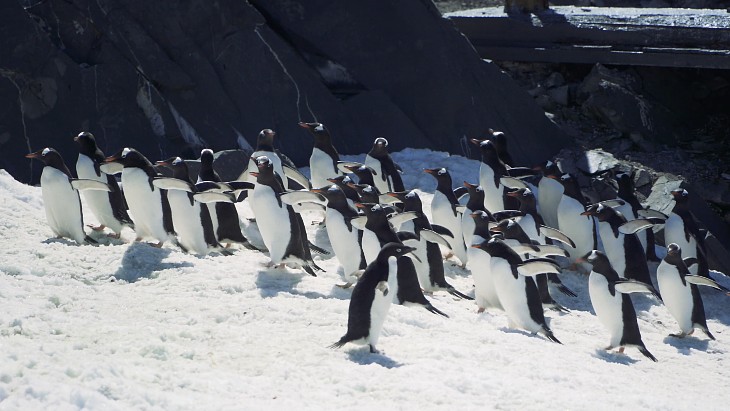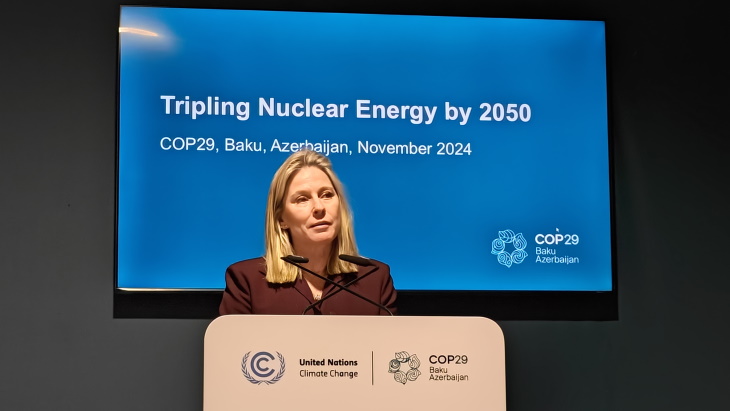Paris Agreement enters into force
The Paris Climate Change Agreement will enter into force on 4 November after crossing its second - and final - threshold of being ratified by countries covering over 55% of global greenhouse gas emissions.
The agreement, which aims to keep global temperature increases this century well below 2 degrees Celsius, and drive efforts to limit temperature increases to below 1.5 degrees Celsius, was adopted in December 2015 at the 21st conference of the parties (COP21) to the United Nations Framework Convention on Climate Change (UNFCCC) held in Paris. Its entry into force required it to be ratified by at least 55 of its 197 signatories - a threshold it crossed on 21 September - and by countries representing a total of 55% of global emissions. The agreement enters into force 30 days after crossing both thresholds.
By the beginning of this week the agreement had been ratified by 62 signatories, representing 51.89% of total global greenhouse gas emissions. Now, following ratification by countries including Canada and New Zealand, as well as the European Union, the totals stand at 74 signatories representing 58.82% of emissions, according to UNFCC data. The European Parliament voted on Tuesday to ratify the agreement following approval by ministers on Monday.
"This is a truly historic moment for people everywhere. The two key thresholds needed for the Paris Climate Change Agreement to become legal reality have now been met," Patricia Espinosa, executive secretary of the UNFCCC, said yesterday. She said the speed at which the agreement had entered into force was "unprecedented in recent experience of international agreements" and a "powerful confirmation of the importance nations attach to combating climate change".
She added: "Above all, entry into force bodes well for the urgent, accelerated implementation of climate action that is now needed to realize a better, more secure world and to support also the realization of the Sustainable Development Goals."
Entry into force will trigger a variety of consequences, starting with the launch of the agreement's governing body, the CMA - shorthand for "the Conference of the Parties to the Convention serving as the meeting of the Parties to the Paris Agreement". This will now take place during the upcoming annual UN climate conference, COP22, taking place in Marrakesh, Morrocco on 7-18 November.
The Intended Nationally Determined Contributions (INDCs) - national climate action plans submitted by parties prior to the adoption of the agreement - will transform into Nationally Determined Contributions (NDCs). Governments will also be obligated to take action to achieve the agreement's temperature goals.
Another key milestone will be the conclusion of the Paris Agreement's implementation rule book, which will set out a global blueprint for reporting and accounting for climate action. The UNFCCC said the rule book, which will make the agreement fully implementable, should be completed "as soon as possible".
"The entry into force of the Paris Agreement is more than a step on the road. It is an extraordinary political achievement which has opened the door to a fundamental shift in the way the world sees, prepares for and acts on climate change through stronger action at all levels of government, business, investment and civil society," Espinosa said.
"The ratification of the Paris Agreement commits governments to making significant reductions in greenhouse gas emissions to limit the effects of climate change. This can only happen if we use all sources of low-carbon electricity, including nuclear energy," Agneta Rising, director general of the World Nuclear Association, said today.
The USA and China - together representing 40% of global emissions - ratified the agreement together in early September. In a statement welcoming the agreement's entry into force yesterday, US President Barack Obama said the world had made history. "If we follow through on the commitments this agreement embodies, history will judge it as a turning point for our planet," he said.
Researched and written
by World Nuclear News

_99697.jpg)

_53540.jpg)





_66488.jpg)


